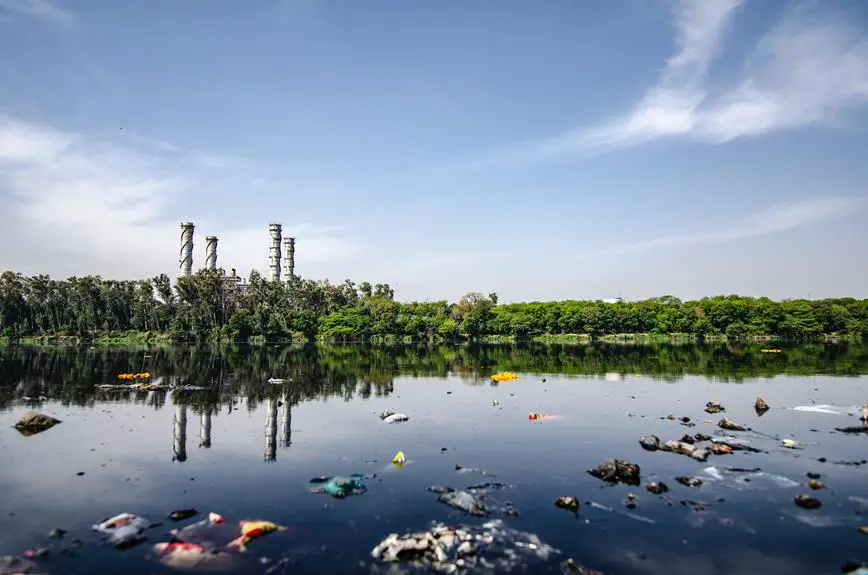Hey there!
Curious if landscape fabric is a friend or foe to your garden? In 'Is Landscape Fabric Toxic? Exploring the Safety of Fabrics,' we'll dig into the nitty-gritty of fabric composition, potential harmful chemicals, health implications, and environmental impact.
Whether you're a seasoned gardener or just starting out, understanding the safety of landscape fabrics is crucial for creating a thriving, toxin-free garden. So, let's roll up our sleeves and uncover the truth about these fabrics.
Stick with me, and we'll explore the alternatives to ensure your garden stays healthy and vibrant. Let's dive in and discover the safety behind the scenes of landscape fabrics!
Key Takeaways
- Landscape fabrics made from polypropylene can contribute to plastic pollution if not disposed of properly.
- Toxic landscape fabrics can contaminate soil, water sources, and affect wildlife and biodiversity.
- Chemical exposure from landscape fabrics can lead to skin irritation, allergic reactions, and respiratory issues.
- Natural and biodegradable alternatives to toxic landscape fabrics, such as wood chips, jute, or recycled paper, can be used to minimize environmental impact.
Understanding Landscape Fabric Composition
Understanding landscape fabric composition is essential for making informed decisions about its use in your garden. When it comes to fabric materials, landscape fabrics are commonly made from polypropylene, a type of plastic. This material is chosen for its durability and resistance to UV degradation.
However, it's important to consider the environmental impact of using plastic-based products in your garden. While polypropylene is known for its strength, it isn't biodegradable and can contribute to plastic pollution if not disposed of properly. Some manufacturers are now producing landscape fabrics using recycled materials, which can help reduce the environmental impact.
When considering landscape fabric composition, it's crucial to weigh the durability and effectiveness of the material against its potential environmental consequences. By understanding the fabric materials used in landscape fabrics, you can make a more informed decision about which product aligns with your gardening goals while minimizing environmental harm.
Potential Harmful Chemicals in Landscape Fabrics
When using landscape fabrics, be cautious of potential harmful chemicals that may be present. Some landscape fabrics are treated with chemicals to resist degradation from sunlight and to deter weed growth. These chemicals can pose potential hazards if not handled and disposed of properly. Chemical exposure from these fabrics can occur during installation, maintenance, and disposal. It's important to be aware of the potential risks and take necessary precautions to minimize chemical exposure.
Potential hazards associated with landscape fabrics include the leaching of harmful chemicals into the soil, which can affect plant growth and potentially contaminate groundwater. Additionally, prolonged skin contact with these fabrics can lead to skin irritation or allergic reactions in sensitive individuals. Furthermore, inhaling airborne particles during cutting or handling of the fabric could result in respiratory issues.
To mitigate these potential risks, it's advisable to wear protective gear such as gloves, long sleeves, and a mask when handling landscape fabrics. Proper disposal methods should also be followed to prevent environmental contamination. Always read the manufacturer's instructions and safety data sheets to understand any potential chemical hazards associated with specific landscape fabrics.
Health Implications of Using Toxic Landscape Fabrics
To understand the potential health implications of using toxic landscape fabrics, it's important to be aware of the risks associated with chemical exposure and take necessary precautions to minimize any adverse effects.
When it comes to the health implications of using toxic landscape fabrics, there are several potential risks that should be considered:
- Respiratory Issues: Prolonged exposure to toxic chemicals in landscape fabrics could potentially lead to respiratory problems, especially when these fabrics are being installed or removed.
- Skin Irritation: Direct contact with toxic landscape fabrics may cause skin irritation, redness, or rashes, which can be uncomfortable and concerning.
- Long-Term Effects: The long-term effects of using toxic landscape fabrics aren't yet fully understood, but continuous exposure to harmful chemicals could potentially lead to more serious health issues over time.
It's important to keep these potential risks in mind and take proactive measures to minimize exposure. Whether it's using protective gear during installation or opting for safer alternatives, being aware of the potential health implications is crucial for making informed decisions about landscape fabric usage.
Environmental Impact of Toxic Landscape Fabrics
You should consider the environmental repercussions of using toxic landscape fabrics, including their potential impact on soil and water quality.
Toxic landscape fabrics can lead to soil contamination and water pollution. When these fabrics degrade, they release harmful chemicals into the soil, affecting its fertility and overall health. This not only disrupts the balance of the ecosystem but also poses a threat to plant and microbial life in the soil.
The chemicals can also leach into groundwater, potentially contaminating water sources and affecting aquatic ecosystems. Moreover, the long-term effects of using toxic landscape fabrics can severely impact wildlife, disrupting their habitats and food sources. This can lead to a decline in biodiversity and ecological balance.
Therefore, it's crucial to opt for environmentally friendly landscape fabric alternatives to mitigate these negative consequences. Considering the broader environmental impact of toxic landscape fabrics is essential in making informed choices that promote the well-being of our ecosystems and wildlife.
Alternatives to Toxic Landscape Fabrics
Opt for environmentally friendly landscape fabric alternatives to mitigate the negative consequences of using toxic landscape fabrics. When looking for alternatives, consider the following options:
- Natural Mulch: Utilizing natural mulch, such as wood chips, straw, or bark, can serve as an effective alternative to toxic landscape fabrics. Natural mulch not only helps to suppress weed growth but also enriches the soil as it decomposes, providing a nourishing environment for your plants.
- Biodegradable Options: Explore biodegradable landscape fabric alternatives made from materials like jute, hemp, or recycled paper. These options offer the benefit of weed suppression while being environmentally friendly and breaking down over time, minimizing long-term environmental impact.
- Plant-Based Coverings: Consider using plant-based coverings, such as newspaper or cardboard, as a natural and biodegradable alternative to toxic landscape fabrics. These materials can be laid directly onto the soil to suppress weed growth and eventually decompose, enriching the soil in the process.
Frequently Asked Questions
Are There Any Long-Term Studies on the Health Effects of Using Landscape Fabric?
Long term health effects of landscape fabric use are a concern. Environmental impact studies are ongoing. It's important to stay informed about potential risks and benefits, especially as more data becomes available.
Can Landscape Fabric Leach Harmful Chemicals Into the Soil Over Time?
Over time, landscape fabric can leach harmful chemicals into the soil. It's important to consider toxicity testing and the environmental impact. Stay informed about potential risks associated with long-term use of landscape fabric to make informed decisions.
Are There Any Regulations or Guidelines for the Use of Landscape Fabrics in Gardening and Landscaping?
Regulatory compliance for landscape fabrics is crucial. Industry standards ensure safe use in gardening and landscaping. Understanding guidelines helps you make informed decisions. Always check for compliance to ensure the safety of your projects.
How Can Consumers Identify if a Landscape Fabric Is Toxic or Non-Toxic?
To identify toxicity in landscape fabric, look for products tested for safety. Check for certifications or labels indicating non-toxicity. Research fabric testing methods and standards to ensure the product meets safety guidelines.
Are There Any Specific Disposal Methods for Toxic Landscape Fabrics to Prevent Environmental Harm?
To properly dispose of toxic landscape fabrics and prevent environmental harm, you should research local guidelines for hazardous waste disposal. Contact waste management authorities for specific disposal methods. Safeguarding the environment requires careful handling of potentially harmful materials.
- How to Prevent Wrinkles in Percale Sheets: A Complete Guide - July 15, 2025
- How to Keep Percale Sheets From Wrinkling: Pro Tips - July 15, 2025
- How to Keep Cotton Percale Sheets Bright White - July 15, 2025






